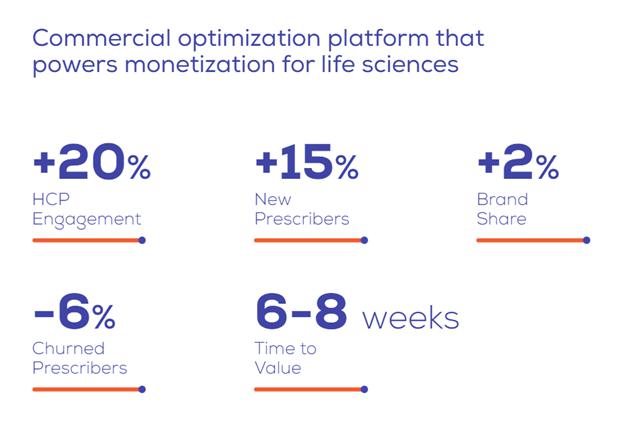Big Pharma companies in the US tend to spend more on sales and marketing than on R&D, according to a recent analysis by America’s Health Insurance Plans. Looking just at the top 10 pharma companies in the US, spending on sales and marketing in 2020 was $137 billion. These expense ratios often apply to smaller pharma, biotech, and medtech companies as well. It’s a huge investment.
Yet the spend can be poorly targeted. Sales reps, despite costing well over $100,000 per head, can prefer to call on the same accounts they always have, waiting an hour or more to win just a few minutes with a physician. Sales leaders can struggle to prioritize accounts, to change messaging to suit particular account contexts, or to shift their emphasis as market contexts evolve.
The challenge is becoming more acute. As drugs become ever more targeted, the market for each drug becomes smaller and the value of a single patient grows. Finding the right patient and gaining their prescription is an essential battle to win.
The Role for AI
Can AI make a difference? Absolutely. The challenge has been to interpret large quantities of ever-changing data to create clear prioritization and tailored messaging for myriad types of healthcare professionals and their employers, informing sales reps about whom to call on and in what way. It fits the pattern of a problem statement tailor-made for AI in healthcare.
Verix, an Israeli-US firm, is one company attacking this market. Shahar Cohen, Verix’s head of AI, explains the need. “To make targeting and promotion decisions, there are getting to be too many variables for humans to consider in a handcrafted way. An oncology drug, for example, should be targeted by physician specialty; geography; typical ages seen; conditions that are typically treated; the mix of insurance used; patient volumes; institutional affiliation; and whether the doctor is seen in a first, second, or third line of treatment. There are dozens or hundreds of potential combinations of factors.”
Historically, life science companies may have used segmentation schemes based on the statistical relationship between clusters of variables. But these approaches are made for situations where there are typically less than a dozen variables in play. The validity of their predictions suffers when the variables multiply, the statistical models aren’t adapted when the market changes, and their logic can be impenetrable to people without substantial training in quantitative analysis. As complexity grows, their usefulness diminishes.
Cohen says, “From a business perspective, it’s impossible to manage too many segments. With our AI, we don’t even try. What we do is prioritize physicians for promotions, channels, and digital engagement. Then we use a supervised learning model to understand the propensity of each physician to change his or her behavior based on action initiated by the pharma company.”
Execution Challenges
Cohen admits that software alone cannot solve this challenge. He notes, “Software is never enough without a proper design of a business process to use it.” Life science companies need to entrust more decisions to these systems, and to align sales reps’ incentives to the priorities programmed into the IT. That can be a significant cultural change.
Another shift with AI is that the implementation of these processes looks different than with other IT platforms. In Verix’s case, Cohen claims, “After a few weeks, we have the data integrated and ready to use. That’s a huge change from situations where IT consultants ran the whole process. It’s quick partly because AI is a platform that continues to adapt and learn. It takes in market data from vendors like IQVIA and merges different sources of information. Then the system keeps re-training. The first configuration is human, of course, but after that it’s automatic.”
One way to ease acceptance is by avoiding AI black boxes. While the deep learning models seen with tools like ChatGPT could be applied to pharma sales and marketing, they aren’t required. In pharma sales and marketing, data ingested by these systems is already structured, reducing the need for deep learning, and the behavioral nature of the recommendations made by the systems enables more of a traditional, algorithmic AI approach. Through the “white box” system, companies can make their models explainable and exert supervisory control more directly.
AI’s Implications for Pharma Sales and Marketing
Through improving targeting and making rep actions more precisely guided, AI can guide the high stakes decisions required in the sales and marketing of personalized medicine. With each patient potentially worth tens of thousands of dollars – or more – this targeting is essential. At the same time, AI may enable trimming expenses on life science sales reps by guiding their actions more directly, and potentially through initiating automated, digital actions instead.
Historically, only rare innovations have enabled simultaneous leaps upward in value and downward in costs. AI may start to make these innovations commonplace.
Read the full article here










